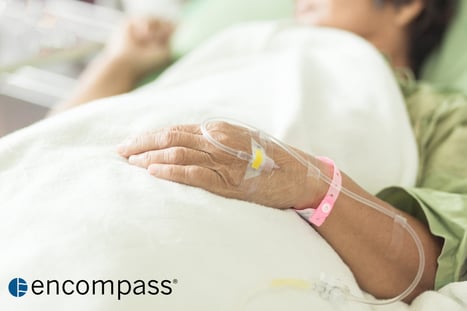Pressure injuries and wounds have presented a significant risk to patients and a clinical challenge to nurses and other clinicians since before nursing became a profession. The skin is the largest organ of the body and although it doesn’t get the same attention as the heart, brain, liver, and lungs, it can be the most serious threat to a patient’s survival or at the very least, to their comfort and well-being. Painful localized skin injuries, called pressure sores or wounds, can develop from prolonged pressure and friction over bony areas of the body. Caring for pressure sores can be difficult and time consuming for nurses and other caregivers. Severely advanced lesions can penetrate the full thickness of the skin tissue to the depth of several centimeters, exposing underlying muscle and other structures such as tendon and bone.

While the newly published AHRQ report data for the period 2014–2017 shows an overall decrease in hospital-acquired conditions (HACs), the good news from this 2019 report doesn’t extend to pressure injuries. Contrary to the overwhelmingly positive trends seen in most other quality measures, the rate of pressure injuries rose by 6% over the study period. In patient terms, this uptick represents an increase of 119,000 pressure wounds, resulting in close to 5000 deaths. In addition, the average length of a hospital stay more than doubles for patients who acquire pressure sores during their care. The total price tag for hospital costs related to these injuries approximates 1.75 billion dollars.
While not all hospital-acquired pressure injuries (HAPI) are able to be prevented, nurses are able to prevent many HAPIs by adhering to best practice standards such as those outlined in the NPUAP/EPUAP International Guidelines. A key element of these guidelines is evaluating individual patient risk using the Braden Scale. This assessment tool rates the likelihood that a patient will develop a HAPI by assigning a numerical value in each of six risk categories for a possible total of 23 points. A lower total score equates with a greater risk. For example, scores between 6 and 9 indicate that the patient is at very high risk, while 19 and above show little risk and require no intervention.
When it comes to actual practice however, the use of the Braden Scale can fall short in achieving the desired patient care. Compliance with best practices demands a high level of diligence from the nursing staff to complete a range of complex daily tasks and enter the results in the patient’s electronic health record. Because the time required for these risk-assessments are not reimbursed at the same level as for other more acute functions, nurses may be directed toward other tasks. In addition, the National Pressure Ulcer Advisory Panel (NPUAP) does not offer explicit guidance as to specific actions clinicians should implement at any particular risk level. As a result, the Braden Scale’s effectiveness can vary widely among patients and facilities.
Nurses will quickly tell you that they would much rather find effective steps to preventing pressure injury than watching their patients suffer from painful complications. As frontline clinicians, nurses have used their insight and invention over the years to help reduce harmful hospital-acquired conditions with innovative patient-care techniques. Today’s nurses are well positioned to take the lead on implementing care practices that will ultimately reduce the unnecessary cost and suffering caused by pressure injuries. Click here to learn more about the crucial role nurses play in reducing pressure injuries and new innovations available to them for patient care.


